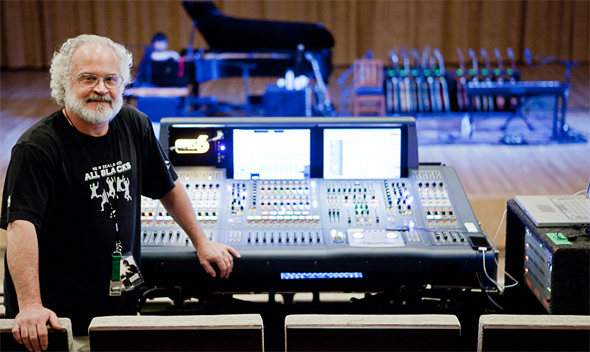
The widespread adoption of in-ear monitors systems has further reduced sound levels and resultant leakage onstage.As a bonus, IEM eliminates the annoying phase combing on vocals from monitor wedges blasting into all the open microphones onstage several milliseconds after the singer has sung.
I’m very grateful for this as live mixer and as a record producer. The quality of vocal performance we’re able to present to an audience is nearing “studio quality” in an ideal live audio environment; like a soft theatre with a well set up modern PA system and no monitor wedges onstage.
I find it difficult to listen to a vocal with monitor wedges onstage these days now that I know what’s really possible. As a record producer, I find that the superior quality of vocal recordings with IEM versus recordings with monitor wedges anywhere onstage is dramatic and easily demonstrable.
Of course, monitor loudspeaker technology has also evolved over the years, as have the skills of monitor engineers, and wedge leakage is no longer as heinous as it once was. In the studio we also have a bag of digital tricks to obscure or reduce time and phase errors that result from leakage in live recordings, but that could be the subject of another article entirely.
More Smooth, More True
Microphone technology hasn’t really advanced that much in the last four decades or so, but the application of microphones onstage certainly has. We now regularly use microphones for live performance that would have been considered very poor choices 20 years ago.
More importantly, we’re now able to clearly hear the difference when using higher quality microphones due largely to the increase in the HF coherence of modern loudspeaker arrays.
That advancement — coupled with the recent trend towards having a system with only one set of A/D-D/A conversions and high sample rate/bit depth digital audio between mic preamp and loudspeaker power amplifier — has led to an overall smoother, more true, and more extended HF response in live systems that really showcases the difference between various microphones.
And all of this, of course, leads to better quality recordings from the stage.
I think it’s a very exciting time to be a sound engineer. That may sound odd to some, but you must admit on a purely technical level it’s almost unbelievable how far we’ve come.
Yes, the field is more crowded than ever. Yes, it seems harder and harder to make a living as a professional at front of house, behind the monitor desk, or in a studio, particularly if you’ve enjoyed some success in the past. Yes, the competition is stiff. Yes, the music business has changed at an alarming rate.
However, I believe that those who are willing to absorb the necessary knowledge and develop the skill sets required by both the live sound and record production worlds can be quite successful in the future.
Paul Dieter has worked as a live/recording engineer and producer for clients including Jackson Browne, David Crosby, CSN, and many others in his 30-plus-year career.
